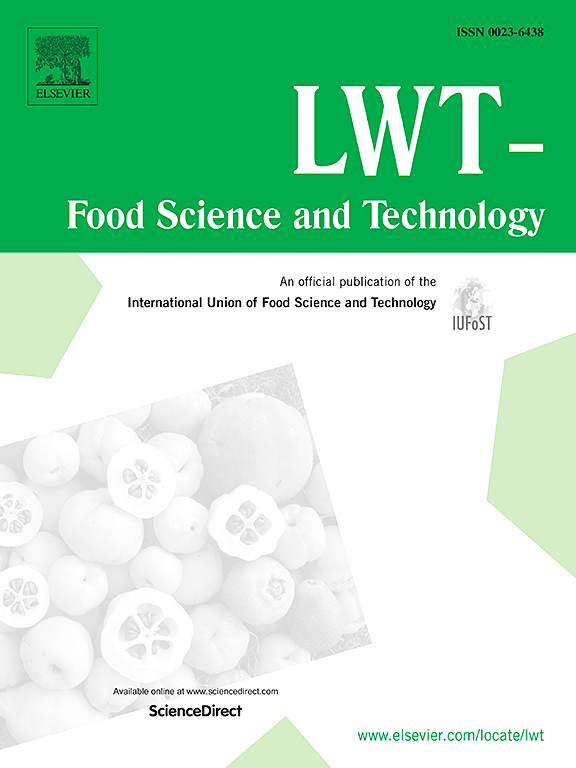基于近红外和拉曼光谱信息融合的茶籽油掺假检测
IF 6.6
1区 农林科学
Q1 FOOD SCIENCE & TECHNOLOGY
引用次数: 0
摘要
茶籽油掺假严重损害了消费者的利益,如影响口感体验和经济损失,因此迫切需要一种快速、高效、无损的检测方法。本研究采用近红外光谱和拉曼光谱检测茶籽油与四种常见食用植物油的掺假情况。在对原始光谱数据进行预处理后,分别使用无信息变量消除、竞争性自适应加权采样和连续投影算法三种变量选择方法来选择关键光谱变量。然后融合近红外和拉曼特征变量,建立判别模型。结果表明,归一化是较好的预处理方法,连续变量选择方法一般优于单一变量选择方法。基于连续变量选择方法的最佳近红外和拉曼模型的预测集准确率和 F1 分数分别达到 95.652%、97.479% 和 92.754%、95.868%。光谱信息融合可以充分利用光谱信息,基于信息融合的最优二元掺假判别模型对标定集和预测集的准确率和 F1 分数均为 100%。同时,多重掺假判别模型的准确率和 F1 分数分别为 98.225% 和 98.932%。因此,融合近红外光谱和拉曼光谱信息可实现对掺假油的高精度判别。本研究提出的方法将有助于开发茶籽油掺假的便携式检测设备。本文章由计算机程序翻译,如有差异,请以英文原文为准。
Detection of tea seed oil adulteration based on near-infrared and Raman spectra information fusion
The adulteration of tea seed oil severely harms consumer interests, such as affecting the taste experience and economic losses, creating an urgent need for a rapid, efficient, and non-destructive detection method. In this study, near-infrared and Raman spectroscopy were used to detect the adulteration of tea seed oil with four common edible vegetable oils. After preprocessing the raw spectral data, three variable selection methods namely uninformative variable elimination, competitive adaptive reweighted sampling, and successive projections algorithm were used individually and consecutively to select key spectral variables. And the NIR and Raman characteristic variables were then fused to develop a discrimination model. The results indicate that normalization is the superior preprocessing method and consecutive variable selection methods are generally superior to single ones. The best NIR and Raman models, based on consecutive variable selection methods, achieve accuracy and F1 score of the prediction set of 95.652%, 97.479% and 92.754%, 95.868%, respectively. Spectral information fusion can fully utilize the spectral information, the accuracy and F1 score of the optimal binary adulteration discrimination model based on information fusion for calibration and prediction sets are all 100%. Meanwhile, the accuracy and F1 score of the multiple adulteration discrimination model are 98.225% and 98.932%, respectively. Therefore, the fusion of NIR and Raman spectral information can enable highly accurate discrimination of adulterated oil. The proposed method in this study will aid in developing portable detection devices for tea seed oil adulteration.
求助全文
通过发布文献求助,成功后即可免费获取论文全文。
去求助
来源期刊

LWT - Food Science and Technology
工程技术-食品科技
CiteScore
11.80
自引率
6.70%
发文量
1724
审稿时长
65 days
期刊介绍:
LWT - Food Science and Technology is an international journal that publishes innovative papers in the fields of food chemistry, biochemistry, microbiology, technology and nutrition. The work described should be innovative either in the approach or in the methods used. The significance of the results either for the science community or for the food industry must also be specified. Contributions written in English are welcomed in the form of review articles, short reviews, research papers, and research notes. Papers featuring animal trials and cell cultures are outside the scope of the journal and will not be considered for publication.
 求助内容:
求助内容: 应助结果提醒方式:
应助结果提醒方式:


